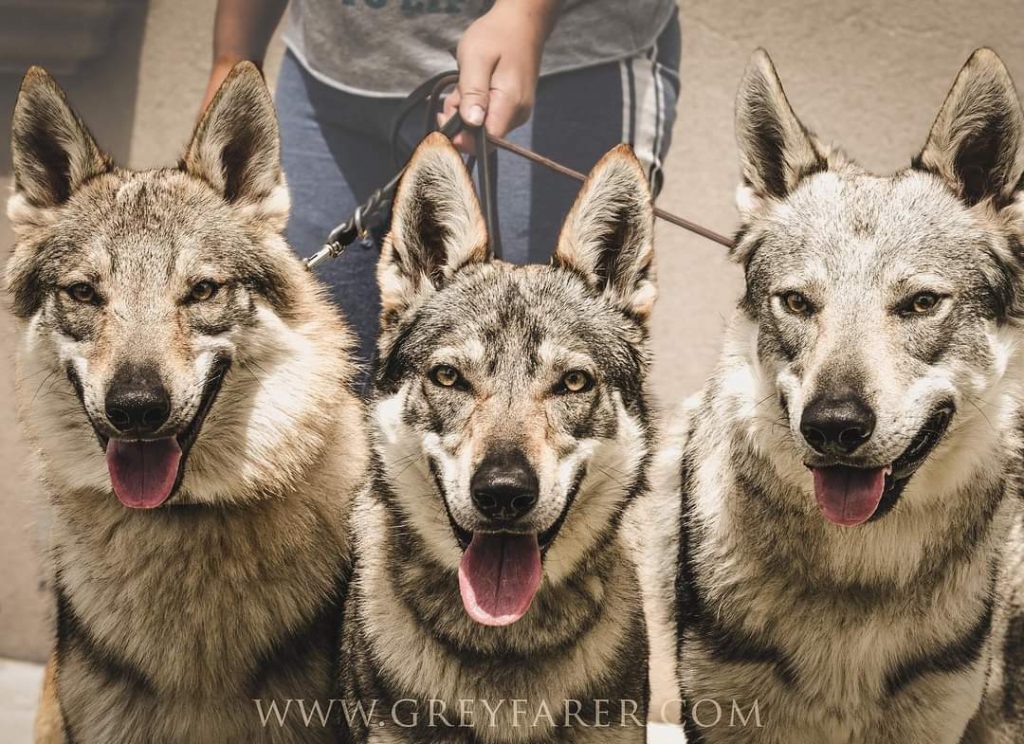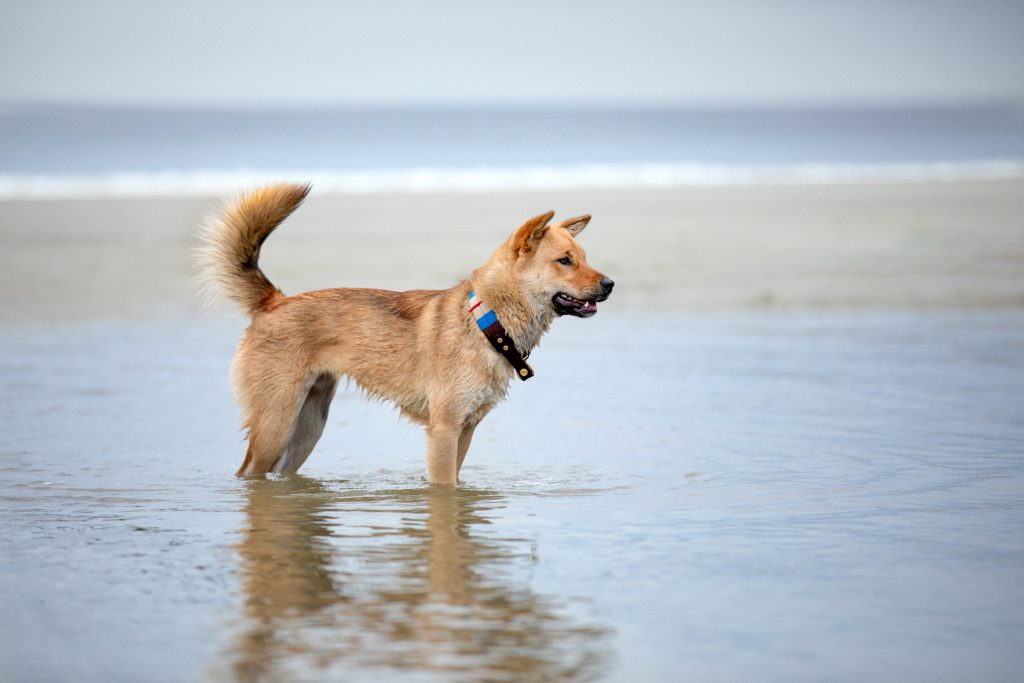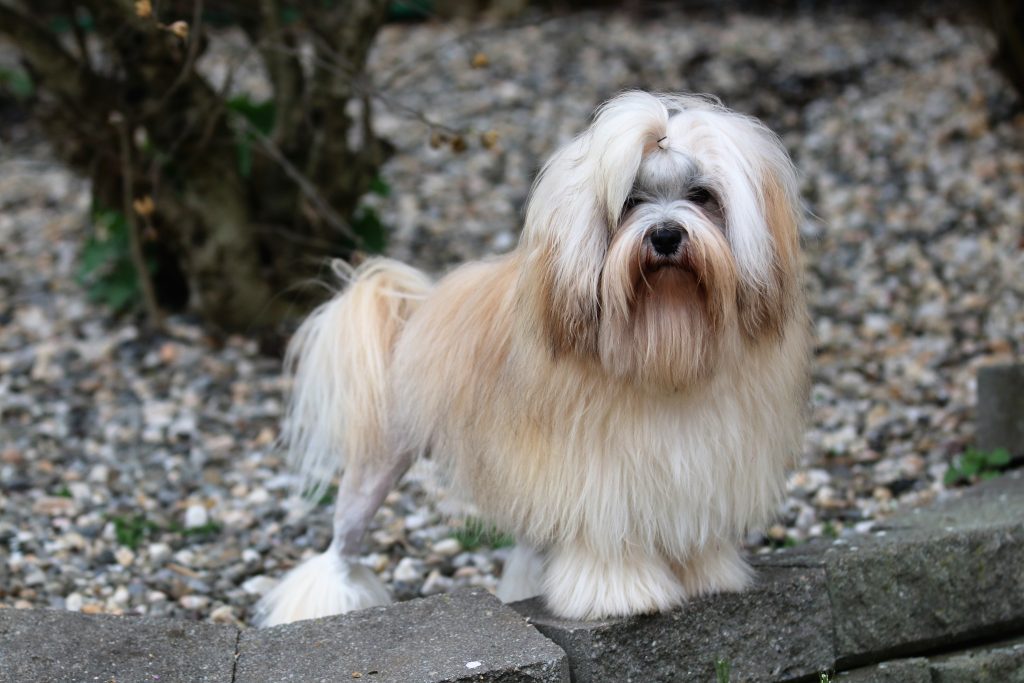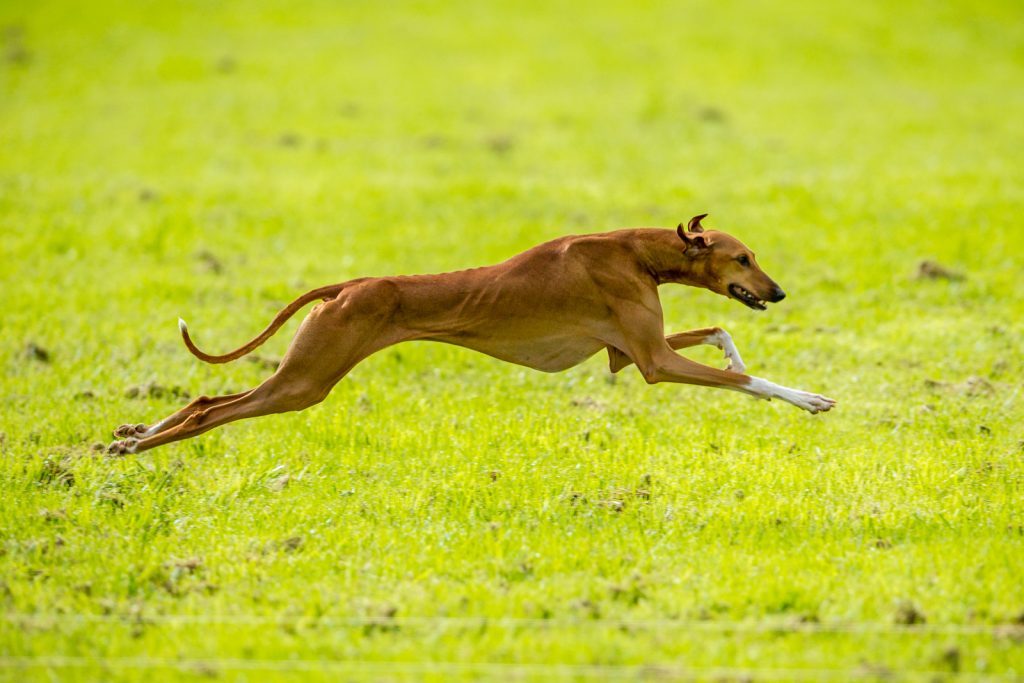By Anabel DFlux
The American Kennel Club (AKC) currently lists 197 registered dog breeds, with more gaining recognition every year. The Fédération Cynologique Internationale (FCI), the largest canine organization in the world, acknowledges approximately 360 dog breeds worldwide. With that many dog breeds out there, it’s likely there are ones you’ve never heard of—even some of the breeds that have been around the longest.
Many breed origins tie closely with our own ancient past, opening a window into the human-canine relationship throughout the centuries. Here are some rare breeds with fascinating stories, from their rich histories to their unique characteristics. To follow are a few rare breed spotlights. To see more rare breeds, check out the article in Pet Companion Magazine, Winter, Curious Canines: Interesting Rare Breeds.
Czechoslovakian Vlcak
Peering into the eyes of the Czechoslovakian Vlcak (pronounced “vul-chak”) gives hint to this breed’s fascinating origin, one that may make the layman gasp. In 1955, a biological experiment took place that crossed the German Shepherd Dog with an Eurasian wolf from the Carpathian area, a wild canid in the region. This is aptly why this breed has a secondary name: the Czechoslovakian Wolfdog. Intended to pull desirable traits from both the domestic and the wild, this experiment determined that it was possible to attain an animal with a bond to humans, propensity for trainability, and viable tenacity for tracking and other useful instincts—but, of course, only after many generations of selective breeding.
Eventually, the Vlcak developed a standard and was officially recognized as a breed in 1982 (although it wasn’t until 2001 that the Vlcak was placed into the AKC’s Foundation Stock Service). Today the breed is far removed from their wild Eurasian ancestry but retains some primitive characteristics and yields considerable wolf influence in its appearance. From the stunning golden eyes to an agouti coat (fur coloration in which each hair displays two or more bands of pigmentation), there is no mistaking the Vlcak history. Their communicative range is more akin to howling and other such vocalizations rather than barking, although some Vlcaks do still bark.
The Vlcak’s strong loyalty to their family is admirable, but the breed does have a predisposition to be suspicious of and aloof toward strangers. Early and proper socialization is a must for the Vlcak. The breed is confident and brave, with a fierce intelligence, helping them excel at a variety of activities and sports with the proper training. Daily exercise and mental stimulation will help your puppy resist the urge to chew and destroy—but be warned, without enough mental and physical stimulation, Vlcaks may find some objectionable ways to entertain themselves around the house.
Those who share their lives with Vlcaks adore their devotion and love for activity and find their loyal companionship a life-long reward.
Korean Jindo
The Korean Jindo traces its roots back to the island of its namesake, located just off the southwest corner of the Korean peninsula. It is still undetermined how the Jindo first came to be on the island of Jindo, but the primary theory speculates that the breed originated from indigenous dogs already on the Korean peninsula thousands of years ago. The breed roamed freely alongside their human companions, developing into skilled hunters. The Korean Jindo is regarded as a significant cultural asset, and in 1962, the breed was named Korea Natural Treasure #53. In 1999, the Jindo Dog Research Center was established on the island to study this rare dog.
In the United States, the Jindo is predominantly found in Korean immigrant communities, having brought the pup stateside from its country of origin. The breed is rare on U.S. soil, as a result of strict export regulation to preserve the population within Jindo Island. However, fans of the breed formed tight-knit organizations to continue preserving Jindos—in 1993, Jindo owners in California established a Jindo breed club and started conducting shows in 1995. Jindo judges were flown in from Korea to the United States to judge these shows.
Jindos bond very tightly to their human companions, reminiscent of their symbiotic relationship on the island of Jindo. Their indigenous breed origin exhibits a strong prey drive, but Jindos can be taught to discern the difference between intruding species and their own family counterparts (such as other pets in the home or their owner’s livestock). Many primitive characteristics remain, such as an excellent sense of territory and a keen observation of family hierarchy. The breed can learn commands easily, but their strong independent nature can sometimes make consistent obedience a challenge, depending on the individual dog. Cleanliness and fastidiousness are important to the Jindo, with the breed seldom exhibiting a dog odor and only shedding twice a year.
The Korean Jindo, a magnificent companion for the right home, is a loyal watchdog with deep connections to their family.
Löwchen
With the heart of a lion and a bucket full of love, the löwchen is an incredible little breed that provides endless joy to their owners. Bred intentionally to give and receive love, the löwchen makes an excellent friend—and has since as far back as the 16th century. Löwchen legend tells the story of Bijou, a löwchen that lived during the 18th century in a castle in Weilburg, Germany, built on the shores of the Lahn River. It’s said that Bijou’s owner left on a hunting trip without him. Bijou was so distraught, he leapt from a 60-foot window into the river rather than be parted from his master. To this day, a portrait of Bijou that was completed in 1787 still hangs in the baroness’s bedroom in Weilburg Castle.
Much of the information about the origin of the breed is unverified, leading to controversy among historians and breed fanciers. Some speculate that the löwchen came from Germany, France, and Belgium, tying itself to breeds that were forerunners of the poodle. Others argue that the breed is from the Mediterranean region and is directly related to the bichon-type breeds of that area. It’s even been claimed that the löwchen originated from as far away as Russia and Tibet. What is certain, however, is that the löwchen has survived—incredibly—through hundreds of years of some of Europe’s most tumultuous history (despite nearly becoming extinct during every major European conflict). Löwchens were so revered that it’s said knights who died in their homes rather than on a battlefield had a löwchen carved into the foot of their tomb.
The first known breeder of the löwchen is, by all reports, is Dr. Walthier. His first name apparently not recorded, Dr. Walthier lived in Germany in the early 1800s. The first breed standard was published (date unknown) in a book, Dogs of All Nations, by Count Henry de Bylart. In 1897, the first documented breeder and exhibitor of the löwchen, Maximillian de Conick, sold a pup to one Madame Madelaine Bennert. Madame Bennert was ultimately very well known for her tireless advocacy to save this rare breed. The AKC recognized the löwchen in 1996.
Löwchens have a long, flowing coat that is traditionally clipped into a lion cut (in German, “löwchen” translates to “little lion”). The coat benefits non-shedding as well. Pet löwchens can also be given a puppy cut, a popular favorite for its ability to bring out the puppy-like charm of the breed. Löwchens are well known for their happy gait and joyous expression, as well as a gaily carried tail. Their cheerful demeanor is evidence of the dog’s temperament, as löwchens are known to be happy, affectionate, attentive, and receptive to their humans.
A breed whose enchanting disposition is only matched by their winsome faces—long, silky ears, mouth in a perennial smile, and those soulful, bottomless eyes—löwchens all over the globe are making their owners fall more in love with them every day.
Azawakh
With human history so closely tied to that of our canine companions, we can catch a glimpse into our own past through some of these ancient breeds. The Azawakh, an African sighthound, has long been the livestock protection dog of choice for the 2 million nomadic people who live across the Sahara Desert, including in the North African countries of Mali, Niger, Libya, Algeria and Chad. For centuries, Azawakhs have guarded herds for the Peulh, Bella, Hausa, and Tuareg people. Azawakh sighthounds guard their camps and livestock in packs, working together to ward off predators. In the Tuareg native language, these dogs are called “idii n’ illeli,” which means “sighthound of the free people.”
In 1970, a Yugoslavian diplomat negotiated the acquisition of a breeding pair, believed to be the first export of the Azawakh outside of its native country. Further members of the breed were taken out of the country by French civil servants and military forces stationed in the region, introducing the breed to Europe. Europeans named the Azawakh after the West African Azawakh Valley from which they originated—the name translates to “land of the north.” From Europe, the Azawakh eventually found its way to the United States.
Azawakhs are built to withstand the harsh conditions of African deserts—lean and leggy with minimal body fat, this breed is built for speed, as are all sighthounds. Their long, skinny bodies reach somewhere between 23 and 29 inches in height. A grown Azawakh typically weighs just 33 to 55 pounds, depending on its gender, which means you should see their ribs at a healthy weight.
The Azawakh has an elongated, vertical format—in other words, its body fits into a rectangle with its longer sides in a vertical position. This body type keeps the bulk of the dog’s body away from the heat of the ground. They have dry, tight skin and an incredibly short coat (even compared to other sighthounds) to help them regulate heat efficiently. Azawakhs also have flat musculature like a marathon runner (rather than bulky muscles like a sprinter), which also helps them diffuse heat instead of storing it. These canine athletes definitely need their daily exercise—but just like other sighthounds, after they’ve expended their excess energy, they will happily snooze around the house afterwards.
While they love their human families, Azawakhs can be wary of new people. As sighthounds, their prey drive is strong, so they’ll always want to take off when they see something moving—even other small pets or running children. Because of their intelligence, independent nature, and problem-solving abilities, Azawakhs need experienced pet parents who can keep them from bolting, stay firm with training, and socialize them early.
The breed is treasured for their companionship, intelligence, and exceptional hunting skills.
But these proud and loyal dogs are just as happy serving as great protectors of their homes and families. They bond strongly with their owners and make affectionate, playful, and devoted companions.











